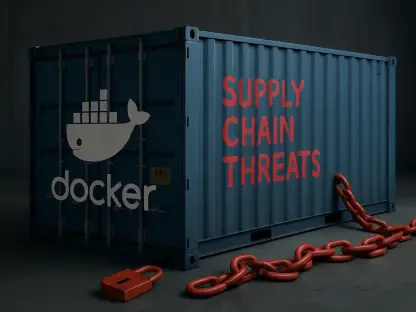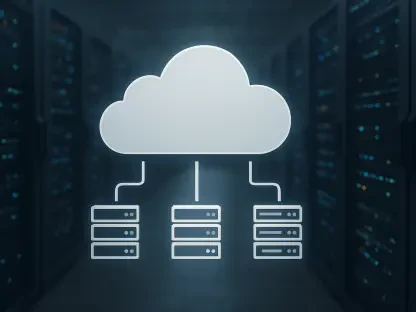In today’s ever-evolving tech landscape, Maryanne Baines stands as a beacon of expertise in cloud technology. With vast experience evaluating numerous cloud providers and their tech stacks, she offers a wealth of knowledge on how enterprises navigate through these dynamic times. In our discussion, we tap into her rich insights on the impacts of current US tariff policies on the global IT services market, and explore how companies are leveraging digital transformation to remain resilient.
How are the current US tariff policies affecting the global IT services market?
The current tariff policies are significantly influencing the global IT services market primarily by disrupting supply chains and increasing hardware costs. These policies make it challenging to source hardware within the US, leading to delays in projects. The increased costs create a ripple effect, making enterprises more cautious about their spending and investments. This is especially noticeable in hardware-dependent projects where budget and timelines are severely impacted.
What specific supply chain disruptions are IT service providers facing as a result of these tariffs?
IT service providers are facing numerous disruptions in their supply chains. For one, there’s a shortage of key hardware components, which causes delays in project timelines. Additionally, there are logistical challenges, such as longer delivery times and increased shipping costs. These factors collectively lead to a significant slowdown in the deployment of hardware-based solutions, forcing providers to rethink their strategies.
How are these disruptions influencing the timelines and budgets of hardware projects?
The disruptions are causing substantial setbacks in both timelines and budgets for hardware projects. Delayed shipments of critical components mean that projects need to be rescheduled, extending their duration. Moreover, the increased costs due to tariffs necessitate budget revisions. This often results in decisions to either postpone projects or seek alternative, often more costly, solutions to stay on track.
How are enterprises adjusting their spending in response to the uncertainties caused by tariffs?
Enterprises are becoming more conservative with their spending due to the uncertainties from tariffs. They’re prioritizing essential projects and deferring ones that can be postponed. There’s also a noticeable shift towards investing in digital transformation initiatives, like cloud services and AI, which offer greater flexibility and are less impacted by tariffs compared to traditional hardware projects.
What types of IT projects are companies most likely to delay or shelve due to increased costs and uncertainty?
Projects that heavily rely on physical hardware are the first to be delayed or shelved. These include data center expansions, on-premises server upgrades, and network infrastructure enhancements. Instead, companies are channeling their resources into software-based solutions and cloud services that can provide similar functionalities without the need for extensive hardware investments.
Are there any patterns or trends in how different sectors are responding to these economic pressures?
Different sectors are responding uniquely to these pressures. For instance, the manufacturing sector is prioritizing automation technologies to reduce reliance on physical labor and compensate for supply chain disruptions. The financial sector, on the other hand, is doubling down on cybersecurity and AI to enhance service delivery and operational efficiency while cutting costs.
Despite these challenges, why do you believe digital transformation remains a key strategy for businesses?
Digital transformation is fundamental because it enables businesses to be more agile and responsive to changing market conditions. By adopting technologies like cloud and AI, companies can scale operations up or down according to demand, reduce operational costs, and improve overall efficiency. These capabilities are invaluable, especially during times of economic uncertainty caused by tariffs or other global events.
In what ways can cloud services help businesses mitigate the challenges related to tariffs?
Cloud services mitigate challenges by providing scalable and flexible solutions that are not dependent on physically procured hardware. With cloud platforms, businesses can quickly adapt to changing needs without significant upfront investments in hardware, thus avoiding supply chain delays and cost increases associated with tariffs. This elasticity allows them to stay agile and maintain continuity.
How can AI and automation provide businesses with operational agility during times of economic uncertainty?
AI and automation can enhance operational agility by streamlining processes, reducing human error, and automating repetitive tasks. These technologies enable businesses to respond faster to market changes, optimize resource allocation, and improve decision-making. They also help in maintaining productivity levels with reduced reliance on physical infrastructure, which is particularly beneficial during supply chain disruptions.
How do the impacts of tariffs vary across different industry sectors?
The impacts of tariffs vary significantly across sectors. For instance, manufacturing is hit hard due to its high dependence on imported components, forcing companies to invest in local production and automation technologies. Conversely, the tech sector might be less affected directly but faces indirect impacts through increased costs in essential hardware. Each sector adapts uniquely based on its dependencies and operational models.
Can you give examples of specific digital solutions that are particularly effective for certain sectors, such as manufacturing?
In manufacturing, digital solutions like Internet of Things (IoT) devices and industrial automation systems are particularly effective. These technologies facilitate better monitoring and management of production processes, enhancing efficiency and reducing downtime. For sectors like retail, AI-driven analytics can personalize customer experiences and optimize inventory management, ensuring better service delivery amidst disruptions.
What role do technologies like robotics, AI, data analytics, and IoT play in driving process automation in these sectors?
These technologies are integral to driving process automation. Robotics automate physical tasks in manufacturing, reducing labor costs and increasing precision. AI and data analytics provide insights for decision-making and predictive maintenance. IoT connects devices and systems for real-time monitoring and control. Together, they create smart, automated environments that enhance productivity and operational efficiency.
What strategies should IT service providers adopt to help their clients navigate the challenges posed by tariffs?
IT service providers should focus on offering solutions that enhance flexibility and reduce dependence on physical hardware. They must advocate for cloud adoption, AI, and automation to help clients maintain operational continuity. Additionally, developing outcome-based contracts rather than competing on price ensures that clients perceive value in sustained benefits rather than short-term cost savings.
Why is it important for service providers to develop outcome-based contracts rather than competing on price?
Outcome-based contracts emphasize the results and value delivered to clients rather than the cost of services. This approach aligns the interests of both the service provider and the client, fostering a partnership that focuses on achieving tangible business outcomes. It also differentiates providers in a competitive market where price alone can lead to unsustainable business practices and diminished service quality.
How can IT service providers effectively communicate the importance of these technologies to their clients?
IT service providers must use case studies and success stories to demonstrate the real-world benefits of adopting technologies like cloud and AI. Providing detailed insights into how these solutions can solve specific business challenges helps build trust. Regularly engaging with clients through workshops, webinars, and consultations ensures a continuous dialogue on evolving needs and technological advancements.
What long-term benefits can companies expect from transforming their business using digital solutions like cloud and AI?
Companies adopting digital solutions like cloud and AI can expect numerous long-term benefits, including improved operational efficiency, scalability, and cost savings. These technologies enable better resource allocation and enhanced customer experiences. Over time, businesses become more resilient to market fluctuations and better equipped to innovate, ensuring sustained competitive advantage.
How do you see the landscape of the IT services market evolving in the coming years, given the current economic climate?
The IT services market is likely to see a shift towards more integrated and adaptive service models. Providers will increasingly focus on delivering strategic value through digital transformation initiatives. There will be a greater emphasis on AI, automation, and cloud services, as these technologies offer the flexibility and resilience needed to navigate economic uncertainties. Service innovation and outcome-driven models will become the norm.
What investments should businesses prioritize to stay competitive amidst global trade uncertainties?
Businesses should prioritize investments in digital transformation, particularly in areas like cloud infrastructure, AI, and automation. These technologies offer the agility, scalability, and efficiency needed to adapt to changing market conditions. Investing in data analytics and cybersecurity also ensures that businesses can protect and leverage their most critical assets. Staying ahead in technological adoption will be key to maintaining a competitive edge.
Do you have any advice for our readers?
Embrace digital transformation as a strategic imperative. Regardless of the current economic challenges, investing in cloud, AI, and automation can provide the agility and resilience needed to thrive. Focus on long-term value and outcomes rather than short-term cost considerations. Stay informed about technological advancements and be proactive in integrating these solutions into your business processes.









